
Supplement the knowledge gained in the ECC courses with our all day workshop. Learn about actual communication procedures from experienced ARES leaders. Includes field equipment demonstrations and personal preparedness. Attendance is required for all active ARES members prior to any assignment.
 Ed Burg, N1VSJ, DEC for Emergency Ops, conducting a “go-kit” demonstration. Click to enlarge. Photo courtesy W1MPN
Ed Burg, N1VSJ, DEC for Emergency Ops, conducting a “go-kit” demonstration. Click to enlarge. Photo courtesy W1MPN
There will be an Emergency Communications Workshop on Saturday October 25th, 2003 from 10:00 AM-4:00 PM at the Littleton Town Hall, 41 Shattuck Street in Littleton, Massachusetts. This session is being put on by the ARES Section Staff and through the efforts of ARES DEC for Field Operations Ed Burg-N1VSJ and Northern Middlesex County ARES Emergency Coordinator Darrel Mallory-K1EJ.
This Emergency Communications Workshop will provide the background and information to serve Amateur Radio Operators when they need to respond to a communications emergency. It will feature an Introduction and Conclusion to Emergency Communications, and training sessions on topics including:
*Overview of Eastern Massachusetts ARES-RACES-SKYWARN Programs
*Net Operations
*NTS Traffic Message Handling
*Basic Overview of ICS
*Practical discussions and “Go Kits” demonstration
*Interactive Exercises on Field Operations
This training will also feature a 1 hour lunch that will be provided at no coerced cost to any Amateur who attends the session.
Please press link to read more and find out how to sign up and directions.The Emergency Communications presentations will be given by Amateur Operators in the ARES leadership who are well versed in the topics listed above. The training will be a worthwhile endeavor not just for emergency communicators but for anyone who is an amateur radio operator, and wants to,learn more about the hobby.
Preregistration is requested but not required for this workshop. You are allowed to preregister right up until the workshop and walk-ins to the workshop will be allowed.
Directions to the Workshop:
From the South:
Take I-495 North to Exit 30, which is the Route 2A/Route 110 exit and head toward Littleton/Ayer. Merge on to MA-2A/King Street/MA-110 to Littleton Common and take a left on to Shattuck Street.
From the North:
Take I-495 South to Exit 30, which is the Route 2A/Route 110 exit and head toward Littleton/Ayer. Merge on to MA-2A/King Street/MA-110 to Littleton Common and take a left on to Shattuck Street.
Talk-in: 146.955 PL 74.4 PART repeater
For any additional information and to preregister for the workshop, please contact:
W1MPN-Mike Neilsen w1mpn@ema.arrl.org
K1EJ-Darrel Mallory darrelma@aol.com
This training should be a worthwhile endeavor for anyone interested in learning more about emergency communications and amateur radio in general.
[Webmaster note: View pictures of the last workshop at the
ARES Workshop and SEMARA Cookout Photo Gallery.
Respectfully Submitted,
Robert Macedo (KD1CY)
ARES SKYWARN Coordinator
SEMARA ARES Emergency Coordinator
Southeastern Massachusetts ARES District Emergency Coordinator
Pager #: (508) 354-3142
Home Phone #: (508) 994-1875 (After 6 PM)
Home/Data #: (508) 997-4503 (After 6 PM)
Work Phone #: 1-800-445-2588 Ext.: 72929 (8 AM-5 PM)
Email Address: rmacedo@rcn.com, and personal website:
http://users.rcn.com/rmacedo
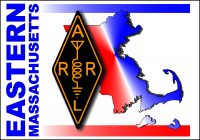


 There will be an Emergency Communications Workshop on Saturday, October 25th, 2003 from 10:00 a.m. until 4:00 p.m. at the Littleton Town Hall, 41 Shattuck Street in Littleton, Massachusetts. This session is sponsored by the ARES Section Staff and through the efforts of ARES DEC for Field Operations Ed Berg, N1VSJ and Northern Middlesex County ARES Emergency Coordinator Darrel Mallory, K1EJ. [
There will be an Emergency Communications Workshop on Saturday, October 25th, 2003 from 10:00 a.m. until 4:00 p.m. at the Littleton Town Hall, 41 Shattuck Street in Littleton, Massachusetts. This session is sponsored by the ARES Section Staff and through the efforts of ARES DEC for Field Operations Ed Berg, N1VSJ and Northern Middlesex County ARES Emergency Coordinator Darrel Mallory, K1EJ. [ Priscilla Richardson, N1VQY writes:
Priscilla Richardson, N1VQY writes: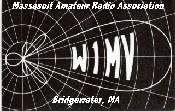 On October 19, the Massasoit ARA will assist with communications for the East Bridgewater YMCA Fall Frolic Road Race 2003. The race will be getting underway at noon. “Helpers should be at the Y by about 11:15–11:30 a.m. to get their T-shirts and get deployed to their respective areas. We can use all the help we can get so come and have some fun with our radios. The food is always good after the race.” —Thanks, MARANews, October, 2003
On October 19, the Massasoit ARA will assist with communications for the East Bridgewater YMCA Fall Frolic Road Race 2003. The race will be getting underway at noon. “Helpers should be at the Y by about 11:15–11:30 a.m. to get their T-shirts and get deployed to their respective areas. We can use all the help we can get so come and have some fun with our radios. The food is always good after the race.” —Thanks, MARANews, October, 2003 A ham group that advocates for missing children has been invited to demonstrate Amateur Radio at a fund-raiser in Brockton on November 14. The Radio Operators for Missing Children, KB1HGK, “promotes getting ham operators involved in Amber Alerts and to be available to provide emergency communications in the event that they are requested by law enforcement or legitimate missing person’s organizations,” according to the group’s founder, Sheree Greenwood, K1SQ, of Warren, MA. “This fund-raiser is for missing child Jennifer Fay who will have been missing for 15 years on this date. Money is being raised to help follow up on recent tips to try and locate Jennifer.”
A ham group that advocates for missing children has been invited to demonstrate Amateur Radio at a fund-raiser in Brockton on November 14. The Radio Operators for Missing Children, KB1HGK, “promotes getting ham operators involved in Amber Alerts and to be available to provide emergency communications in the event that they are requested by law enforcement or legitimate missing person’s organizations,” according to the group’s founder, Sheree Greenwood, K1SQ, of Warren, MA. “This fund-raiser is for missing child Jennifer Fay who will have been missing for 15 years on this date. Money is being raised to help follow up on recent tips to try and locate Jennifer.”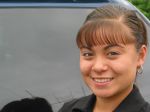 Seventeen-year-old Jessica Kirkwood, KB1JUW, of Westport was featured in an ARRLWeb story, Youth and Emergency Communication. The article describes Kirkwood’s participation in a recent emergency communications course offered by the EMA ARRL ARES leadership through the South Eastern MA ARA (SEMARA) in South Dartmouth. Kirkwood is an active SEMARA member. She says she’s “ready to help her community” should an emergency arise. [
Seventeen-year-old Jessica Kirkwood, KB1JUW, of Westport was featured in an ARRLWeb story, Youth and Emergency Communication. The article describes Kirkwood’s participation in a recent emergency communications course offered by the EMA ARRL ARES leadership through the South Eastern MA ARA (SEMARA) in South Dartmouth. Kirkwood is an active SEMARA member. She says she’s “ready to help her community” should an emergency arise. [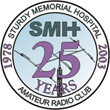 The Sturdy Memorial Hospital ARC will hold a Ham Radio Expo in conjunction with the Boy Scouts of America’s annual JOTA event. The expo will be held this Saturday, October 18th from 10:00 AM to 4:00 PM at the Hospital’s Rice Webb Auditorium in Attleboro, MA. There will be several stations setup and operating, allowing local Scouts to “Get on the Air for JOTA”!The club is doing this as part of their 25th Anniversary Celebration and to attract more interest in our Service/Hobby. “We’d like to take the opportunity to present our capabilities to the general public” states John Benson – N1FLO, the Club’s President “and also, to local Emergency Management Officials and Hospital Personnel.” Stop by and check it out… for more info, email n1iv@arrl.net
The Sturdy Memorial Hospital ARC will hold a Ham Radio Expo in conjunction with the Boy Scouts of America’s annual JOTA event. The expo will be held this Saturday, October 18th from 10:00 AM to 4:00 PM at the Hospital’s Rice Webb Auditorium in Attleboro, MA. There will be several stations setup and operating, allowing local Scouts to “Get on the Air for JOTA”!The club is doing this as part of their 25th Anniversary Celebration and to attract more interest in our Service/Hobby. “We’d like to take the opportunity to present our capabilities to the general public” states John Benson – N1FLO, the Club’s President “and also, to local Emergency Management Officials and Hospital Personnel.” Stop by and check it out… for more info, email n1iv@arrl.net 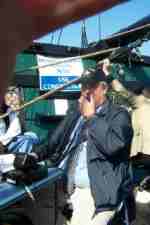
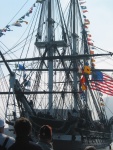
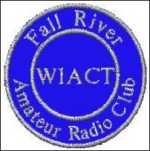 Don, N1PMB writes:
Don, N1PMB writes: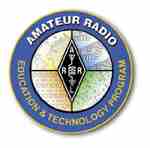 A Boston-area amateur is involved with a grass-roots effort to promote ham radio and electronics among Dorchester youths.
A Boston-area amateur is involved with a grass-roots effort to promote ham radio and electronics among Dorchester youths.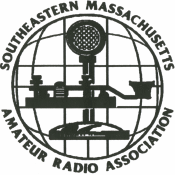 Dave Dean, K1JGV writes:
Dave Dean, K1JGV writes: The September, 2003 EMA section traffic totals have been posted to
The September, 2003 EMA section traffic totals have been posted to 

